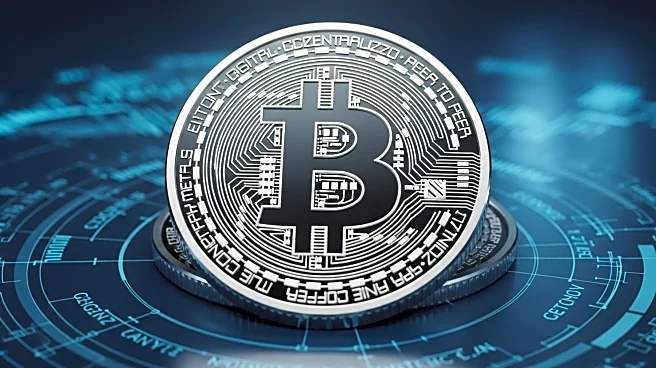What's Happening?
The Federal Reserve's anticipated decision in September 2025 is set to be a critical moment for financial markets, particularly concerning Bitcoin's role as an inflation hedge. Recent data from July's Personal Consumption Expenditures (PCE) report revealed a core inflation rate of 2.9% year-over-year, the highest since February 2025, while headline inflation remained at 2.6%. This situation presents a challenge for the Fed as it navigates between controlling inflation and supporting a slowing labor market, which saw job growth dip to 73,000 in July. Bitcoin's performance in the third quarter of 2025 has been mixed, showing positive returns after inflationary shocks tied to the Consumer Price Index (CPI), but its hedging power has been less effective when measured against the Fed's preferred Core PCE metric. The cryptocurrency's volatility has increased, as indicated by indices like Volmex's BVIV and Deribit's DVOL, reflecting its sensitivity to macroeconomic changes.
Why It's Important?
The significance of the Federal Reserve's decision lies in its potential impact on Bitcoin and broader financial markets. A rate cut could enhance Bitcoin's appeal as a store of value, especially as risk-on assets tend to benefit from such monetary policy shifts. Historically, Bitcoin has moved inversely to the Fed's policy rate, suggesting that a rate cut could boost its value. However, if inflation persists, particularly in services driven by housing and healthcare, Bitcoin's narrative as an inflation hedge could be challenged. Institutional adoption of Bitcoin, with $70 billion in ETF assets under management, has normalized its role as a portfolio diversifier, but its price remains closely tied to Fed communications and global monetary policy.
What's Next?
Investors are closely monitoring the Federal Reserve's September meeting, with a 25-basis-point rate cut currently priced in at an 87% probability according to the CME FedWatch tool. The Fed's decision will likely influence Bitcoin's market dynamics, with a weaker dollar post-rate cut potentially amplifying Bitcoin's appeal. Conversely, a hawkish stance by the Fed to address persistent inflation could lead to a sell-off, testing Bitcoin's resilience. Strategic positioning for investors will need to balance these dynamics, considering both macroeconomic tailwinds and potential volatility.
Beyond the Headlines
The broader implications of the Fed's decision extend beyond immediate market reactions. Structural bottlenecks, such as U.S. tariffs on goods, complicate the inflation outlook and could influence Bitcoin's long-term hedging efficacy. Additionally, the evolving narrative around Bitcoin's role in diversified portfolios highlights the importance of metric selection in evaluating its utility. As institutional adoption continues to grow, Bitcoin's integration into mainstream financial strategies may further solidify its position as a significant asset class.











